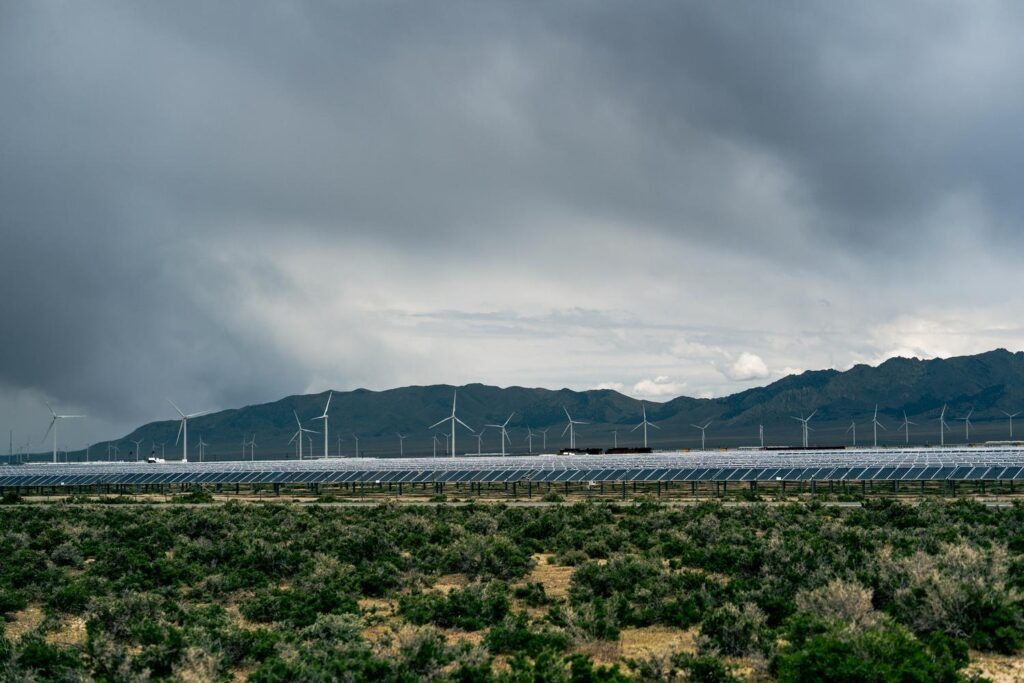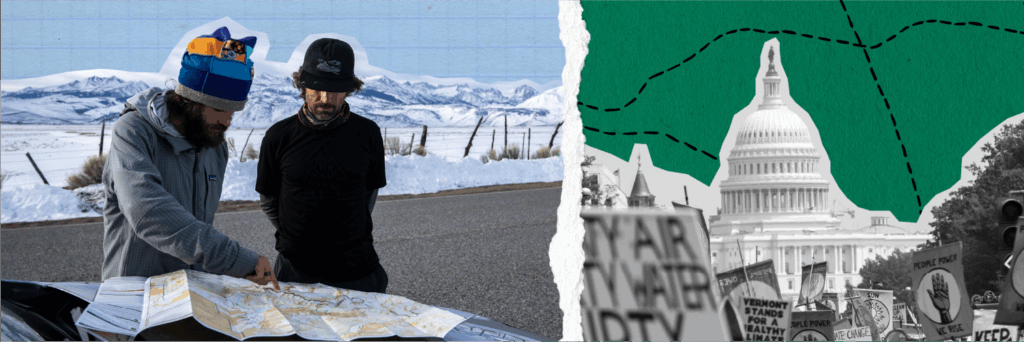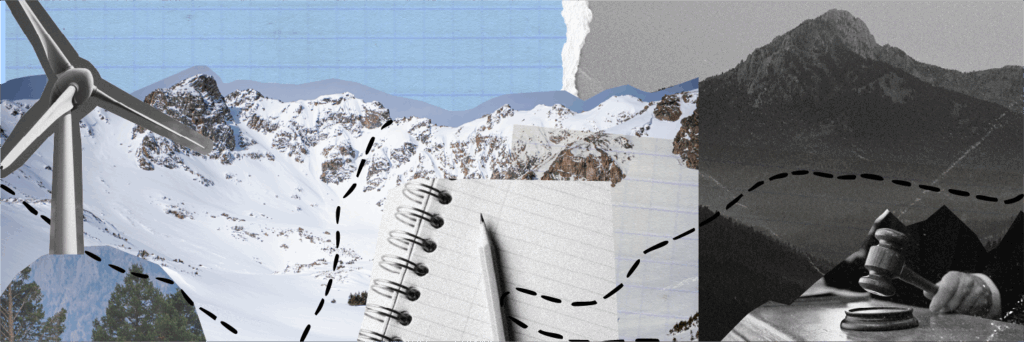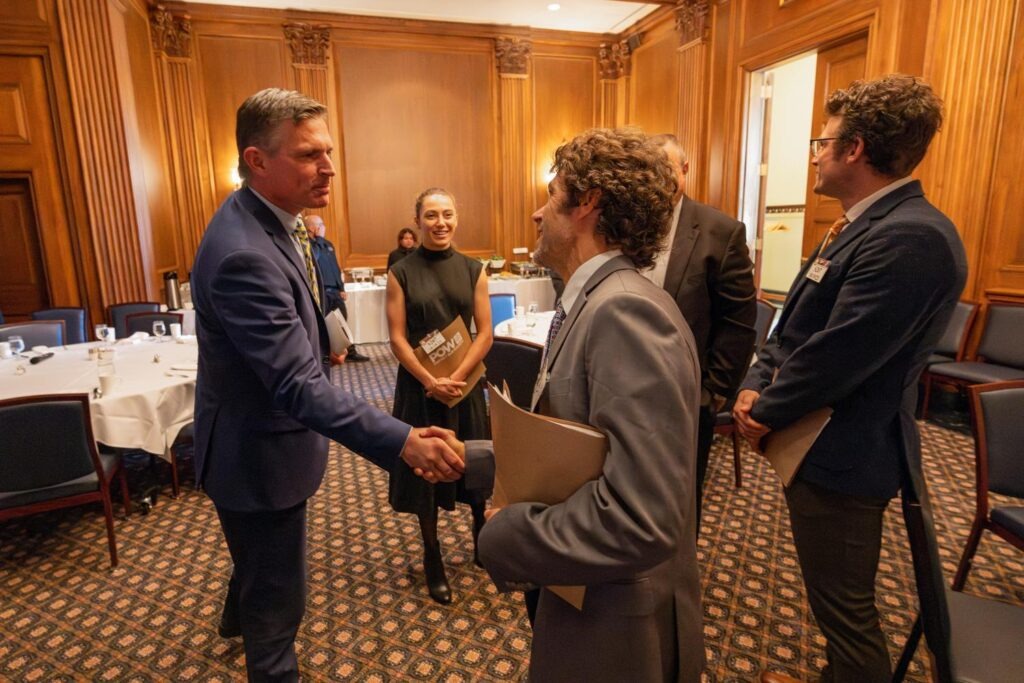The POWer of Policy: How Legislation Shapes Climate Action
Photo by POW Creative Alliance member Holly Shankland, graphics by POW Creative Alliance member Eliza Carver
Legislation is one of the most powerful tools for tackling climate change. By setting limits on emissions, investing in clean energy, and encouraging sustainable practices, climate laws shape how industries and individuals interact with the environment.
The Inflation Reduction Act (IRA)—the largest climate bill in U.S. history—has already had a huge impact, driving historic investments in renewable energy and consumer products (like EVs, heat pumps, and rooftop solar) and making them more accessible and affordable.
In its first two years in law, it established the following:
Incentives Driving Clean Energy Adoption: The IRA has spurred significant investment, including $126 billion in individual/community clean energy in 2023, a 16% growth in electric vehicle investments, and $250 billion in industrial/energy sectors since the IRA began (a 34% increase), with utility-scale solar investment more than doubling in early 2024.
Creating Clean Energy Infrastructure: The IRA has driven $152 billion in domestic clean energy manufacturing investment, more than doubling the amount from the previous two years. This investment has led to job creation and industrial growth, particularly in battery production and EV components, concentrated in the Midwest and Southeast.
Justice40: The IRA supports Justice40, which aims to direct 40% of benefits to disadvantaged communities. Early reports indicate that 20% of Justice40 programs are meeting their goals, and efforts are ongoing to measure and ensure equitable outcomes.
Measuring the IRA’s Impact on Emissions Reductions: The IRA is contributing to emissions reductions. It aims for a 40% reduction below 2005 levels by 2030, with 2023 U.S. CO2 emissions 3% lower than 2022. Additionally, there has been significant growth in clean energy development.

“The IRA has grown because individuals, households, organizations, and companies are more willing to invest their money to be a part of the effort. Clearly, this isn’t an issue of the government’s deep state forcing people to use technologies that they don’t want,” said POW Science Alliance member Dr. Greg Nemet. “It’s dramatically the opposite. People and communities are more eager to adopt clean technologies than government analysts expected, and the IRA is helping them do just this.”
The key to effective climate legislation is having clear goals and strong enforcement. The Paris Agreement set a global framework for reducing emissions, pushing countries to commit to ambitious climate targets. In the U.S., the Clean Air Act has successfully reduced air pollution and regulated greenhouse gases, proving that strong policy leads to measurable environmental improvements. Laws like carbon pricing programs make pollution more expensive, pushing companies toward cleaner alternatives, while land use protections safeguard forests, public lands, and other carbon sinks, ensuring that our most vulnerable and beautiful landscapes are protected for generations to come.
When well-designed and properly enforced, climate legislation reduces pollution, sparks innovation, accelerates the clean energy transition, and builds a more sustainable future. The proof is in the policies that have already reshaped industries and cut emissions. In the fight against climate change, strong policies are not just helpful—they’re essential.
How does a bill become law?
Passing a bill is like tackling a big climb: It requires endurance, teamwork, and favorable conditions.
Every bill starts as an idea, either from a member of Congress or even a group of citizens who want to see change. That idea gets mapped into a formal proposal, known as a bill, and introduced in either the House or Senate (or both).

From there, it faces its first major challenge: the committee stage. Lawmakers examine the bill, debate it, and make adjustments—just like fine-tuning your gear and strategy before heading into the backcountry. Amendments are suggested, and the bill is voted on within that committee.

If the bill clears this stage, it reaches its first major crux: a vote on the House or Senate floor. If it passes, it moves to the other chamber, where it must endure a similar round of scrutiny, adjustments, and another vote. Both chambers must then agree on a final version before it reaches the ultimate checkpoint: the president’s desk.

At this stage, the bill has two possible routes to the summit: it can be signed into law or vetoed. If vetoed, Congress has one last push—it can override the veto with enough support. However, if the President lets it sit while Congress is out of session, it’s a pocket veto, and the trail ends there.

It’s a tough climb, full of obstacles and switchbacks, but when a bill reaches the top, it becomes the law, charting the way for a better future.

What is lobbying, and why does POW lobby/work with politicians?
Strong climate legislation doesn’t happen by itself. It requires people to show up and push for change, and that’s where lobbying comes in.
Lobbying isn’t a bad word. It’s our fundamental right as citizens. At POW, we take that right seriously. We visit Washington, D.C., multiple times a year with our Alliance Members to meet with lawmakers from both sides of the aisle. We tell our climate stories, push for policies that protect public lands, and work to influence decisions that will ensure clean air, clean water, and a healthy planet for future generations.
“Climbing Capitol Hill is one of the hardest hills in the world,” said POW Founder and professional snowboarder Jeremy Jones. “We come here pushing for climate policy, and we are not going to get the CO2 reductions we need without it.”

Boots-on-the-ground work like this is essential. We are rallying support for public land protections in places like Alaska, Utah, Colorado, Nevada, and more. We’re building momentum for the Energizing Our Communities Act (EOCA), a cross-partisan clean energy bill that we helped introduce into Congress last year. This bill aims to provide economic assistance to communities that host clean energy infrastructure. We’re also advocating to keep critical investments in clean energy from the IRA intact and off the chopping block.
“Getting the chance to speak face-to-face with lawmakers was truly empowering, and I was pleasantly surprised by how positive the overall dialogue was with members from both political parties. It feels like there’s a real willingness to sincerely engage in these conversations,” said Olympian and POW Run Alliance member Fiona O’Keeffe. “However, I’m also aware of the massive challenges that we’ll face with the new administration. It’s great to see that POW has concrete policy ideas and solutions even with the uncertain landscape.”
Advocating for a healthy planet isn’t just about science—it’s about action. And action starts with policy. Every climate law passed, every clean energy investment secured, and every acre of public land protected is a step toward a more sustainable future. But none of it happens without people like you—voters, advocates, and outdoor enthusiasts—stepping up and demanding bold action.
At POW, we’re in this because we know what’s at stake: the places we love, the air we breathe, and a sustainable future for the groms. Change doesn’t happen on its own. It happens when we show up, speak out, and push for policies that move us forward. We’ll catch you at the trailhead.

Author: Stacie Sullivan
Stacie always knew she wanted to pursue a career in the ski industry from a young age, having first clicked into skis at the age of 4 and writing her 8th grade career project on being a professional skier. While her dreams of becoming a professional athlete didn’t quite pan out the way she planned at […]
